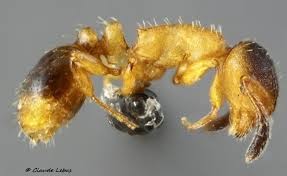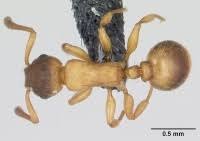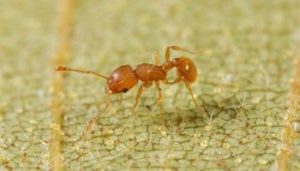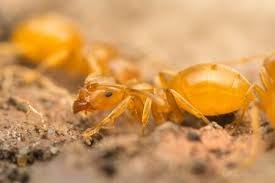Ant Review: Beginnings of a Slaver Ant
A Queen lies in wait. She will become the beginning of a new empire. However, this empire takes a different turn. She crawls into a nest- what appears to be a formica fusca nest- and slowly turns it into her own.
Hello, and welcome to a new Ant Review – Beginnings of a Slave-Making Ant.
The Slave-making ant, or Myrmoxenus ravouxi, is an ant that begins its colony in a very unique way. As you will see in this article, they truly are antagonizers to the entire ant kingdom.
Description:
Myrmoxenus ravouxi or Slave-making ants, are generally red; however, their colors can vary: it can range from a general brown, to a dull red or yellow.
Here are some examples of this:


Location:
These ants can live almost everywhere, although subspecies tend to live in one area only. The color of these ants also depends on location. For example, the North American slave-making ant is yellow.

Fun Facts:
- Enslaved ants can and do indeed rebel. One way includes tearing up the brood of the slave-making queen.
- Slave-making ants have adapted so well into enslaving ants that they can’t even feed or create nests themselves.
- These ants’ queens’ lives could be in danger as their empire begins because the workers could team up against her before she can copy her scent.
Ant Comparison:
In this section, we compare two ant species to each other and look at a scenario in which these two could fight.
Lasius Flavus (The Yellow Garden ant)

Pros:
- Easy to keep
- Require minimal amount of work
- Eat honey and insects, which are easy to get
- Ideally kept by people that have little time on their hands
Cons:
- Tiny, so can escape proofed nests
- Can be hard to find, especially if it is the first time looking for them
- Yellow and small which can make them look like lying seeds
Myrmoxenus ravouxi (Slave-Making ant)

Pros:
- They usually require only one queen
- They rarely need care as the slaves care for them
- They are of a larger size
- They are less likely to attempt an escape
Cons:
- Require a queen to raid on, meaning you have to have a lot of outdoor time
- Are really delicate during the first stage
- Easy to kill by accident
- Could kill other queens in other colonies if they manage to escape
The Fight:
The slave-making ants are on the attack. They quickly engulf the outside workers and are now fighting to get in the yellow ants’ block entrances, which fight back in a very aggressive way. As the slave-making ants push into one entrance and begin to move into the nest, they push themselves into the middle.
Suddenly, like a thief in the night, the slave-making queen is found right next to the yellow meadow ant queen. As they tussle, ants rage on into the fight.
The slave-making queen proceeds to fatally wound the yellow meadow queen, making the ants slowly succumb as they now have no queen.
As the last ants are finished off, the workers take the brood to raise as slaves.
Ant Recap:
Overall, this ant is very interesting as, although they are very hard to keep, they lead very complicated systems. This ant is very cool- and is a dream species I wish I could have. Slave-making ants, however, are very aggressive, so you will need to wear gloves before interacting with them.
This is all from me, and tune in next time for…
Ant Review (The Farmers of the undergrowth)

